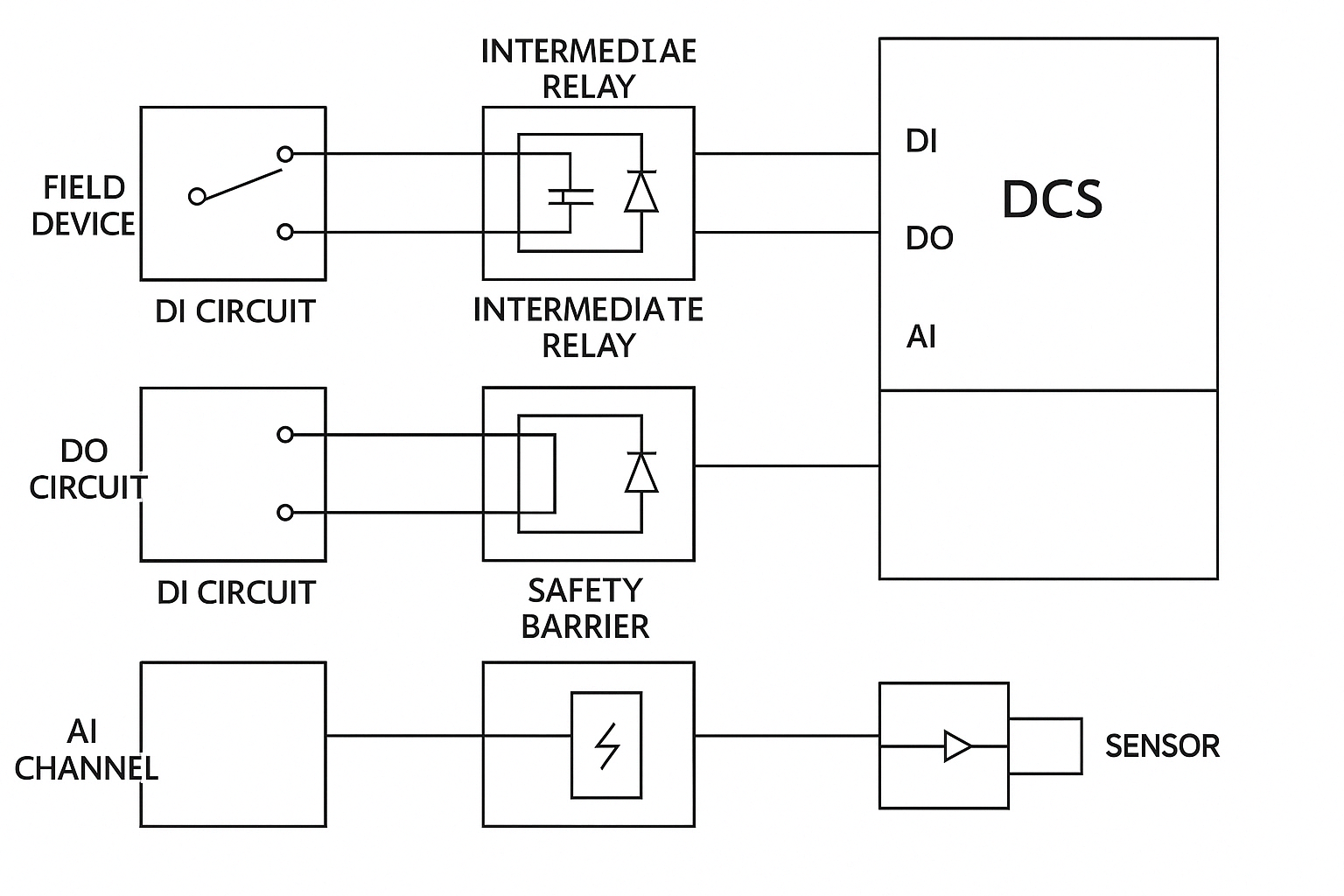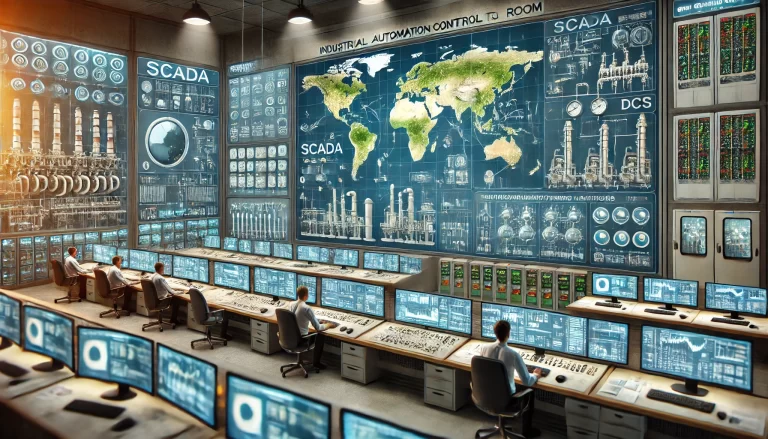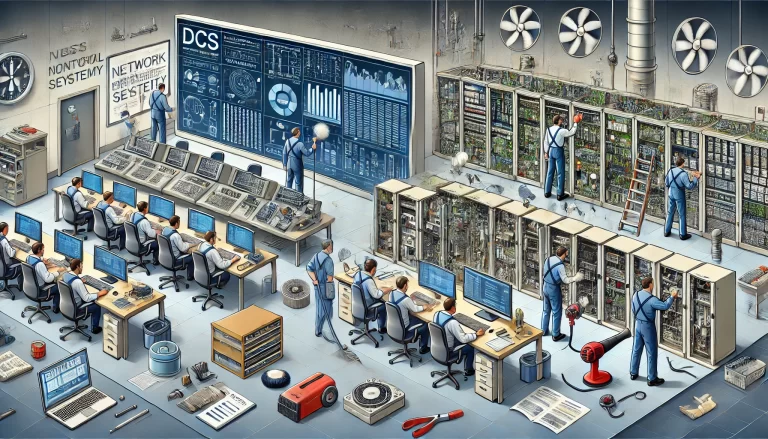This document outlines practical approaches for daily maintenance and troubleshooting of Distributed Control Systems (DCS), with a focus on power systems, network communications, and software-related issues.
1. Power Supply System
DCS systems commonly adopt dual-redundant hot-swappable power supplies. Although DCS systems are generally stable during normal operations, faults—typically single-line power losses—can still occur. Prompt troubleshooting is essential for rapid system recovery.
1.1 Maintenance Guidelines
🔍 Use infrared thermometers to inspect temperatures at power cable terminals, distribution boards, and screw joints.
🔩 Check for loose or overheated connections at terminal blocks and ensure fuses match circuit specifications.
🔋 Verify the stability and wiring scheme of the UPS system.
⚠ Respond immediately to power alarms to prevent extended single-source operation.
🛡️ If controller power replacement is delayed, implement preventive measures to avoid controller reinitialization failures.
1.2 Fault Causes
Poor electrical contact at cable terminations or wiring points.
Loose connections due to operational vibration.
Mechanical stress causing terminal bolt issues.
Substandard insulation or increased cable impedance.
Corrosion affecting connectors.
Improper cable routing and layout.
Inadequate grounding, causing electromagnetic interference.
1.3 Fault Handling
Select high-quality power modules with optimized redundancy ratios.
Resolve loose connections during regular maintenance.
Optimize wiring layout to minimize EMI.
Maintain detailed power system logs and replace aging components based on lifecycle data.

2. Network Communication
The DCS network includes multiple nodes: operator stations, engineering stations, and controller processors. Fault symptoms include system freezes, station disconnections, communication interruptions, and failed redundancy switching.
2.1 Common Fault Causes
Inconsistent data queries from nodes resulting in repeated commands and network congestion.
Damaged communication media (e.g., fiber, cables).
Poorly configured I/O mappings or unoptimized load sharing.
Driver incompatibility after software upgrades.
Excessive memory usage from historical data storage.
Overheating hardware due to cooling failures.
2.2 Maintenance and Optimization
Conduct regular network stress testing and monitor load distribution.
Reset DPUs and clear unused I/O during inspections.
Implement dual-layer network topology (control vs. management networks).
Check hardware cooling systems and physical connections.
Use unidirectional communication protocols between subsystems.
Integrate CRT-based temperature alarm systems.
Carefully validate compatibility of software upgrades with existing hardware.

3. Software System
DCS software issues typically stem from programming errors, especially after system upgrades or reconfiguration. Multiple personnel performing overlapping configuration tasks can also increase the risk of inconsistencies.
3.1 Common Fault Types
Mismatched master/slave CPU configurations preventing proper initialization.
Misaligned database configurations with channel signals.
System chaos from blocked communication links.
Print job failures.
Parameter errors after component replacement.
Device control failures due to incorrect output signals.
3.2 Troubleshooting Strategies
Use stable and tested software versions wherever possible.
Prepare detailed upgrade or modification plans and conduct technical briefings before implementation.
Establish version control and software backups to prevent data loss during failures.

4. Case Study: Temperature Loop Fault After System Upgrade
Scenario: A process control system based on Windows 2000 Professional intermittently switched a temperature loop from automatic to manual mode, accompanied by an “open circuit” alarm.
Analysis & Resolution:
Fault traced to damaged control cables with compromised shielding.
Strong magnetic fields from 13 three-phase heating zones interfered with signal lines.
Replacing all affected cables and enforcing standardized installation procedures resolved the issue.

Conclusion
Proactive DCS maintenance, structured fault analysis, and real-world feedback loops are essential for ensuring system reliability. By targeting key areas such as power, communication, and software, organizations can significantly reduce unplanned downtimes.
